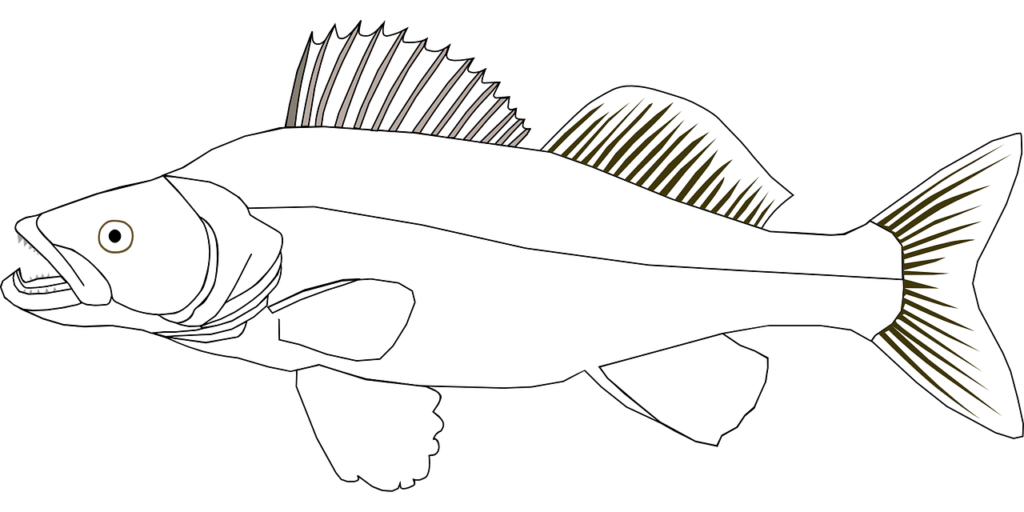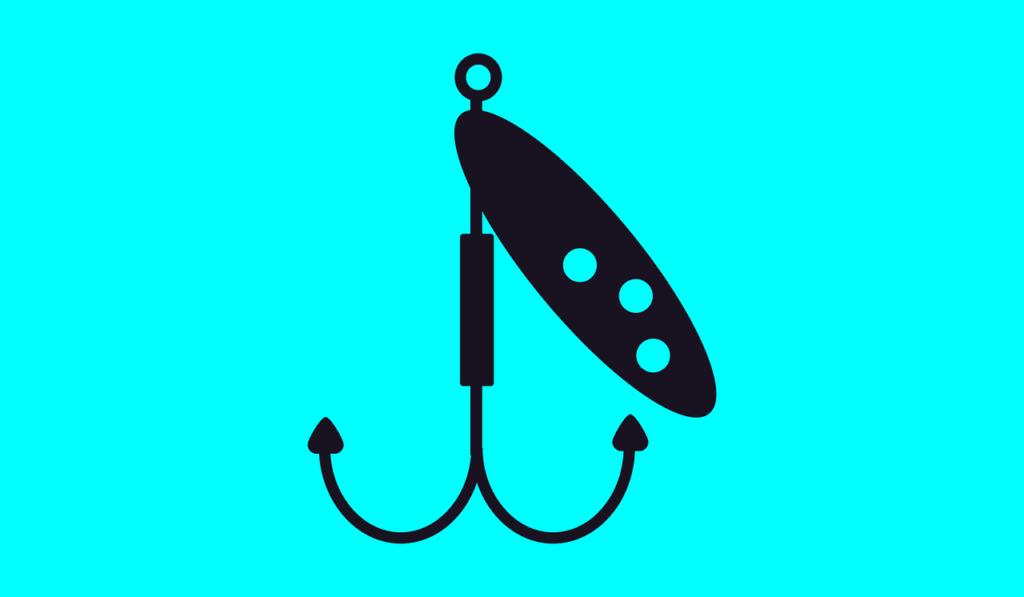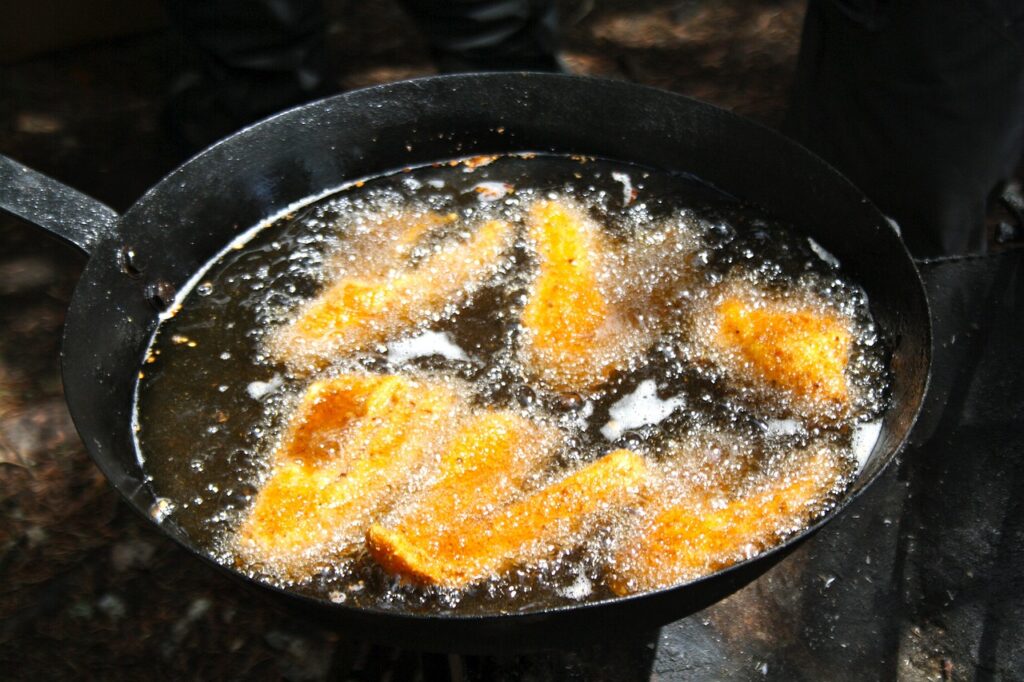If you’re an avid angler or just have a general curiosity about fishing, the “Can You Go Walleye Fishing: Tips and Techniques for Walleye Anglers” guide is a must-have. Packed with valuable information, this comprehensive resource will equip you with the knowledge and skills needed to master the art of walleye fishing. Whether you’re a beginner or seasoned angler, this guide caters to all skill levels, providing tips, techniques, and strategies that will enhance your fishing experience. From understanding the behavior of walleye to choosing the right bait and tackle, this guide is your key to unlocking the secrets of successful walleye fishing.

Gear and Equipment
Rods and Reels
When it comes to walleye fishing, choosing the right fishing rod and reel is crucial. A medium or medium-light spinning rod is often the preferred choice for walleye fishing. Look for a rod that is around 6 to 7 feet long, which will provide you with the right balance of sensitivity and power. As for the reel, a spinning reel with a smooth drag system is recommended. Opt for a reel with a gear ratio of around 5:1 or 6:1 for optimal versatility.
Line and Leaders
Selecting the appropriate fishing line for walleye fishing can greatly impact your success on the water. Fluorocarbon line is a popular choice among walleye anglers due to its low visibility in the water and excellent sensitivity. A line with a test rating of 6 to 10 pounds should be sufficient for most walleye fishing situations. It is also a good idea to use a leader, especially when fishing in waters with rocks or other potential abrasions. A fluorocarbon leader around 12 to 18 inches long will help prevent line breakage and increase your chances of landing that prized walleye.
Lures and Bait
The selection of lures and bait for walleye fishing can be overwhelming, but there are a few tried and true options that consistently produce results. Jigs are a staple in any walleye angler’s tackle box. Opt for jigs in various weights and colors to match the conditions and depth at which you are fishing. Soft plastic twister tails or paddle tails are often paired with jigs to entice walleye strikes. Other effective lures include crankbaits, jerkbaits, and spinnerbaits. When it comes to live bait, minnows, leeches, and nightcrawlers are all excellent choices that walleye find irresistible.
Fishing Tackle
Having the right assortment of fishing tackle is essential for a successful walleye fishing trip. In addition to an array of jigs, crankbaits, and spinnerbaits, it is important to have a variety of hooks, sinkers, and swivels on hand. Split shot sinkers can be used to add weight to your line when needed, while swivels can help prevent line twist. Invest in a quality tackle box that will keep your gear organized and easily accessible. Don’t forget to bring a landing net to safely land those big walleyes without risking injury to the fish or losing your prized catch.
Electronics and GPS
While not essential, investing in quality electronics and a GPS unit can greatly enhance your walleye fishing experience. Fish finders with sonar capabilities allow you to locate schools of walleye and identify underwater structures. GPS units can help you mark hotspots and navigate unfamiliar waters with ease. These technological advancements not only save you time, but also increase your chances of successfully finding and catching walleye.
Choosing the Right Location
Understanding Walleye Habitats
To increase your chances of catching walleye, it is important to understand their preferred habitats. Walleye are often found in lakes and rivers with clear to slightly stained water. They prefer areas with adequate depth, typically ranging from 10 to 20 feet, although they can be found in deeper or shallower waters depending on the time of year. Look for areas with rocky or gravel bottoms, submerged vegetation, drop-offs, and other types of structure that provide cover and ambush points for walleye.
Finding Structure and Cover
When scouting for potential walleye fishing spots, keep an eye out for specific types of structure and cover that are known to attract walleye. Look for points, humps, underwater ledges, and rock piles, as these areas often hold walleye. Additionally, submerged vegetation such as aquatic weed beds and cabbage patches can provide ample cover for walleye to ambush their prey. Fallen trees, docks, and cribs are also worth exploring as they can serve as prime hiding spots for walleye.
Considering Water Conditions
Water conditions play a significant role in walleye behavior and can impact your success on the water. Walleye are sensitive to light, so they tend to be more active during low-light conditions such as early morning, late evening, and overcast days. Pay attention to the clarity of the water as well. In clear water, walleye may be more skittish, so using lighter line and more natural-looking lures may be necessary. In stained or murky water, walleye rely more on their sense of vibration and may respond better to louder or more brightly colored lures.

Time of Year and Seasonal Patterns
Spring Walleye Fishing
Spring is a fantastic time to target walleye as they transition from deeper waters to shallower areas for spawning. Look for walleye in areas with sandy or gravel bottoms, such as river mouths and spawning flats. As the water warms up, walleye become more active and are more likely to bite. Use jigs tipped with live bait or soft plastic twister tails and target drop-offs and current breaks. Slowly retrieve your bait close to the bottom to entice a strike from hungry walleye.
Summer Walleye Fishing
Summer can be a bit more challenging for walleye fishing as they tend to move to deeper waters to find cooler temperatures. Focus your efforts near underwater structure such as reefs, submerged islands, and humps. Trolling with crankbaits or spinners can help cover a larger area and locate active walleye. If the water is particularly warm, try fishing during low-light periods or in areas with cooler water temperatures such as river mouths or near spring-fed areas.
Fall Walleye Fishing
Fall is a prime time for walleye fishing as they actively feed in preparation for the winter months. Look for walleye near weed beds, drop-offs, and rocky points as they search for food. Jigs tipped with minnows or soft plastic twister tails are effective during this time of year. Slowly jigging your bait near the bottom can entice strikes from hungry walleye. As the water temperature drops, walleye may move to deeper waters, so be prepared to adjust your fishing techniques accordingly.
Winter Walleye Fishing
Ice fishing for walleye can be a thrilling experience, but it requires proper safety precautions and specialized equipment. Look for areas with structure such as submerged islands, drop-offs, and weed beds. Use an ice auger to drill a hole, and set up your ice fishing shelter or portable ice fishing tent. Jigging spoons, ice jigs, and live bait such as minnows or waxworms are popular choices for catching walleye through the ice. Pay attention to depth and experiment with different jigging techniques to entice those wintertime walleye.
Walleye Fishing Techniques
Casting
Casting is a versatile and effective technique for catching walleye, especially when fishing from shore or targeting shallow areas. Use lighter jigs or crankbaits and cast them out towards structure or cover. Allow the lure to sink to the desired depth and retrieve it slowly with occasional pauses to mimic injured baitfish. Keep an eye on your line for any subtle twitches or drops, as these can indicate a walleye bite. Casting allows you to cover a larger area and explore different depths, increasing your chances of finding feeding walleye.
Trolling
Trolling is a popular technique for locating active walleye, particularly in open water or when targeting larger areas. Equip your rod with a trolling reel and attach a crankbait, spinner, or worm harness to your line. Adjust your boat’s speed to maintain a consistent trolling speed, typically between 1.5 to 2.5 miles per hour. Experiment with different colors, sizes, and depths to find the combination that triggers the most strikes. Trolling allows you to cover a wide range of depths and explore different areas in search of walleye.
Jigging
Jigging is a highly effective technique for enticing walleye strikes, especially when fishing in deeper waters or around structure. Use a jig head with soft plastic twister tails, minnows, or leeches as bait. Allow the jig to sink to the desired depth and use short, sharp upward motions followed by controlled drops to create an enticing movement. Walleye are typically found close to the bottom, so keeping your presentation near the lake or riverbed is crucial. Jigging allows you to maintain control and precision over your bait, increasing your chances of enticing that elusive walleye.
Drifting
Drifting is a passive technique that takes advantage of natural currents or wind to cover a larger area and present your bait in a natural manner. Use a drift sock or anchor to control your boat’s speed and drift with the current or wind. This technique is particularly effective when targeting large bodies of water such as lakes or rivers. Use jigs, live bait rigs, or spinner rigs and allow them to drift along drop-offs, weed beds, or other promising areas. Drifting gives your bait a more natural movement and allows you to present your offering to a wider range of walleye.
Live Bait Rigging
Live bait rigging is a classic technique for walleye fishing and involves using live bait such as minnows, leeches, or nightcrawlers to entice strikes. Use a slip sinker or bottom bouncer to keep your bait near the bottom. Attach a hook or spinner rig to your line, depending on your preference and the type of live bait you are using. Cast or slowly troll your bait along structure, drop-offs, or other likely walleye holding spots. The natural movement of live bait is often irresistible to walleye, making live bait rigging a go-to technique for many anglers.

Understanding Walleye Behavior
Feeding Habits
Understanding walleye feeding habits can greatly increase your chances of a successful fishing trip. Walleye are primarily ambush predators, lurking near structure or cover and waiting for their prey to come within striking distance. They tend to feed most actively during low-light conditions, such as early morning, late evening, or on cloudy days. Walleye have excellent vision in low-light situations, making them highly efficient hunters during these times. They commonly feed on smaller fish, insects, crayfish, and other aquatic creatures. Paying attention to their preferred prey and adjusting your bait or lure accordingly can significantly improve your success rate.
Spawning Behavior
Walleye spawning behavior typically occurs in early spring when water temperatures reach around 40 to 50 degrees Fahrenheit. They migrate to shallow areas with suitable substrates, such as sandy or gravel bottoms, to lay their eggs. Female walleye release their eggs while males simultaneously release sperm to fertilize them. After spawning, walleye may exhibit post-spawn behavior, which can make them more challenging to catch. They often move to deeper waters or transition to feeding patterns as they recover from the spawning process. Being aware of the spawning behavior can help you narrow down potential fishing spots during the spring season.
Preferred Water Temperatures
Water temperature plays a significant role in walleye behavior and can dictate their movement patterns. Preferred water temperatures for walleye generally range from 45 to 68 degrees Fahrenheit. During colder months, walleye often seek out deeper, warmer waters to conserve energy. As water temperatures rise, walleye become more active and move towards shallower areas in search of food. Monitoring water temperatures is essential for understanding walleye behavior and can help you choose the most appropriate fishing techniques and locations based on the prevailing conditions.
Tips for Catching Monster Walleyes
Targeting Trophy Walleyes
If you’re determined to catch a trophy-sized walleye, there are a few strategies you can employ. Firstly, focus on fishing in areas known for producing large walleye, such as renowned trophy lakes or rivers. These bodies of water typically have healthy populations of walleye and offer the potential for landing a true monster. Additionally, consider using larger baits or lures to target bigger fish. Opt for oversized crankbaits, spoons, or jigs with larger profiles to entice those trophy walleye to strike. Lastly, be patient and persistent. Monster walleye are often wary and cautious, so it may require multiple trips and a bit of luck to catch one.
Using Big Baits
Big baits can often attract big walleye. When targeting trophy-sized fish, consider using larger baits to increase your chances. Oversized crankbaits, swimbaits, or jig heads tipped with large soft plastic twister tails can mimic larger prey and entice those trophy walleye to bite. Experiment with different colors and profiles to find what works best for the current conditions. It’s worth noting that using larger baits may result in fewer bites overall, but the quality of the fish you catch is likely to increase.
Selecting Prime Time to Fish
Timing is everything when it comes to catching monster walleye. Pay attention to the time of day and weather conditions that have historically produced the best results. As mentioned earlier, walleye tend to be more active during low-light periods, such as early morning or late evening. Overcast days can also be productive as they create a subdued light environment. Planning your fishing trips around these prime times can significantly increase your chances of encountering trophy walleye. Additionally, keep an eye on seasonal patterns and plan your trips when walleye are most likely to be actively feeding.

Walleye Fishing in Different Environments
Lake Walleye Fishing
Lake fishing for walleye can offer a diverse range of opportunities, depending on the size and features of the lake. Start by identifying potential walleye hotspots such as points, drop-offs, weed beds, and other structure. Trolling, casting, or jigging can all be effective techniques when fishing in lakes. Consider the time of year and weather conditions when selecting your fishing spot and techniques. In larger lakes, using electronics such as fish finders and GPS units can greatly aid in locating walleye and navigating the waters effectively.
River Walleye Fishing
Fishing for walleye in rivers requires a slightly different approach compared to lake fishing. Look for areas with current breaks, eddies, and other features that create an opportunity for walleye to ambush their prey. Jigging, casting, and live bait rigging are all effective techniques when fishing in rivers. Pay attention to water flow and adjust your fishing techniques to match the speed and direction of the current. River fishing can be particularly productive during the spring and fall when walleye migrate or seek out feeding opportunities.
Ice Fishing for Walleye
Ice fishing for walleye is a popular winter activity that requires specialized gear and techniques. Start by drilling holes in the ice, preferably in areas with structure or cover such as drop-offs, weed beds, or rock piles. Setting up an ice fishing shelter or portable ice fishing tent is essential to protect you from the elements. Jigging spoons, ice jigs, and live bait such as minnows or waxworms are commonly used to catch walleye through the ice. Pay attention to depth and experiment with different jigging techniques to entice those wintertime walleye.
Walleye Fishing Regulations
Fishing License Requirements
Before heading out to catch walleye, it is crucial to familiarize yourself with the fishing license requirements in your area. Each state or province may have different regulations regarding fishing licenses, including fees, residency requirements, and catch limits. Obtain the necessary fishing license and any additional stamps or tags required to legally fish for walleye. Always carry your fishing license with you when out on the water to avoid any potential fines or penalties.
Catch and Release Practices
While it can be tempting to keep every walleye you catch, practicing catch and release can help preserve the population for future generations of anglers. Familiarize yourself with proper catch and release techniques to ensure the fish’s survival after being released. Use barbless hooks to minimize injury and handle the fish gently, keeping it in the water as much as possible. Avoid excessive handling or squeezing the fish, and consider using a landing net to reduce stress and potential damage to the fish’s slime coat. Following catch and release best practices helps maintain healthy walleye populations and ensures great fishing opportunities for everyone.
Size and Bag Limits
Size and bag limits for walleye vary depending on the region and regulations in place. These restrictions are put in place to maintain sustainable fisheries and protect the population of walleye. It is essential to familiarize yourself with the specific size and bag limits in your area before going walleye fishing. Size limits refer to the minimum length a walleye must be to keep, while bag limits indicate the maximum number of walleye you can legally possess. Adhering to these limits not only helps preserve the population but also promotes ethical fishing practices.

Safety Tips for Walleye Anglers
Wearing Personal Flotation Devices
Safety should always be a top priority when engaging in any water activity, including walleye fishing. Wearing a personal flotation device (PFD) is crucial, especially when fishing from a boat or wading in deeper waters. Accidents can happen, and a properly fitted PFD can save your life in the event of an unexpected fall overboard or other emergencies. Choose a comfortable and Coast Guard-approved PFD that suits your fishing needs and always ensure it is worn properly.
Checking Weather Conditions
Before heading out for a day of walleye fishing, it is essential to check the weather conditions and forecast. Inclement weather can make fishing dangerous and reduce your chances of a successful outing. Pay attention to wind speed, storm warnings, and other weather factors that may impact your safety. It is always better to err on the side of caution and postpone your fishing trip if severe weather conditions are expected. Stay informed throughout the day and be prepared to seek shelter if necessary.
Navigating in Low Light
Fishing during low-light conditions can be productive, but it also presents unique challenges, especially when navigating the water. Ensure you have the necessary lighting equipment onboard your boat, such as navigation lights and a spotlight, to increase visibility and avoid any potential collisions. Familiarize yourself with the waterway’s layout and obstructions during daylight hours, which will make it easier to navigate during dawn, dusk, or overcast conditions. Always maintain a cautious speed and be aware of your surroundings to ensure a safe fishing experience.
Walleye Fishing Tips for Beginners
Selecting the Right Gear
For beginners venturing into the world of walleye fishing, selecting the right gear is essential. Start with a medium or medium-light spinning rod in the 6 to 7 feet range, paired with a spinning reel. Invest in a fishing line with a test rating of 6 to 10 pounds, as well as a variety of jigs, crankbaits, and soft plastic baits. As your skills progress, you can expand your tackle collection and experiment with different techniques and lures. Don’t be overwhelmed with the vast array of options available; instead, focus on building a well-rounded arsenal of basic gear.
Learning Basic Techniques
Mastering the basic walleye fishing techniques will lay a solid foundation for your angling skills. Start by learning casting, jigging, and live bait rigging techniques, as these are versatile and effective methods for catching walleye. Take the time to practice your casting accuracy and work on your jigging motions to create an enticing movement. Learn to read the water, identify structure and cover, and understand how walleye behavior changes with each season. With patience and practice, you will gain confidence and develop your own unique approach to walleye fishing.
Seeking Local Knowledge
One of the best ways to improve your walleye fishing skills as a beginner is to seek local knowledge. Local anglers, bait shops, or online forums can provide valuable insights into the best spots, techniques, and even the most productive lures for your specific area. Joining a fishing club or participating in guided fishing trips can also be beneficial, as experienced anglers can guide you through the process and share their expertise. Embrace the opportunity to learn from those with experience and adapt their knowledge to suit your own fishing style.
In conclusion, walleye fishing offers a thrilling and rewarding experience for anglers of all skill levels. By selecting the right gear, understanding walleye behavior, and employing effective fishing techniques, you can increase your chances of a successful outing. Remember to familiarize yourself with local fishing regulations, prioritize safety, and practice catch and release to ensure the sustainability of walleye populations. Whether you’re casting from shore, trolling in a boat, or venturing out onto the ice, walleye fishing provides endless opportunities for fun and excitement on the water. So grab your gear, head to your favorite fishing spot, and get ready to catch some monster walleyes!




